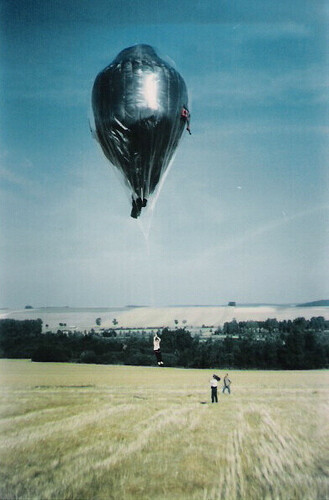“Aerogel”, “collect the runoff”, “if you’re going to go for solar heating of the balloon, which would contribute to global warming”, “You also shouldn’t go for a solar balloon, as that would have a high emissivity.”… (the three last from @Windy_Skies)
To have such ideas, you really have to have no idea what a solar balloon is, and of course never to have built one.
I built two kinds: with a simple envelope, and with a double envelope.
Here is an example with a simple envelope (read the text):

Here is an example with a double envelope:
“Aerogel” is expensive and brittle. One obtains the same result of isolation by implement a transparent envelope, with an air layer between the two envelopes.
“collect the runoff”: make it complicated when you don’t know how to make it simple.
“if you’re going to go for solar heating of the balloon, which would contribute to global warming” : a not supported statement. If we have to say something about this, we could say the opposite, i.e. that direct insolation does not reach the ground.
“You also shouldn’t go for a solar balloon, as that would have a high emissivity.” : Solar balloon - Wikipedia : " A black body absorbs all the radiation that hits it. Real world objects are gray objects, with their absorption being equal to their emissivity. Black plastic might have an emissivity of around 0.95, meaning 95 percent of all radiation that hits it will be absorbed, and the remaining 5 percent reflected."
Incompetence is less forgiven when mixed with arrogance:
One last nonsense:
Should I answer that with only one belt the balance is almost impossible to find?
Incidentally, I experimented with a single belt. I don’t care about your incompetent and pretentious verbiage.
To be honest I think the belts should improve scalability, but not to the point to achieve viability. One of the reasons, unrelated to such a transmission, is that it does not seem possible to reach a high spin ratio (with an inflatable balloon) because of the power consumption which increases according to the cube of the tangential speed of the cylinder, and which is already initially high enough on the balloon that was tested. We therefore arrive at a power per m² comparable to that of a flexible crosswind kite (see the references in the preprint), knowing that for the cylinder the measurement base is the intercepted wind area, in other words the length multiplied by the diameter.
